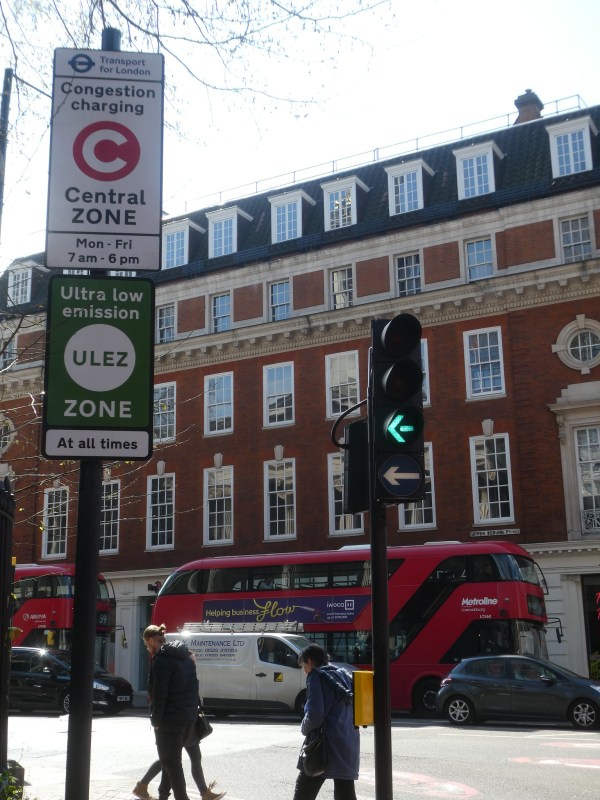Advocates: MTA Board Must Get Moving On Congestion Pricing Details

The clock is ticking.
In less than one year, the state-mandated Traffic Mobility Review Board can issue its nuts-and-bolts recommendations for how congestion pricing is supposed to work, what it will cost, and who will get much-desired exemptions from the toll.
Of course, there’s a few things that need to happen first — primarily Mayor de Blasio and the MTA Board have to actually appoint members to this obscure board, get it an office so it can start the work of setting those tolls and exemptions, and start holding meetings (which are supposed to be public, but might not be!).
On Friday, a coalition of 20 good government and transit advocacy groups including Reinvent Albany, the Permanent Citizens Advisory Council, the Citizens Budget Commission and the Straphangers Campaign fired the first warning shot, with a letter reminding the politicians who passed the tolling scheme earlier this year that the hard work of actually designing and then implementing congestion pricing still needs to be done before it supposed to (magically!) begin in January, 2021.
The Traffic Mobility Review Board is supposed to comprise one chairperson and five members: one appointed by Mayor de Blasio and the rest appointed by the MTA Board/Gov. Cuomo, though two members must be from the Long Island Rail Road and Metro-North service areas.
Asked if the MTA Board had held any discussions about the board and who will be appointed to it, de Blasio’s MTA Board appointee Veronica Vanterpool told Streetsblog it had not. Noting that she felt it could wait until after December’s decision on the 2020 MTA budget, Vanterpool still urged the Board to prioritize the TMRB going forward.
“All eyes are on NYC for this rollout, so we shouldn’t squander time,” Vanterpool said. “January, 2021 is around the corner.”
A spokesperson for Cuomo referred Streetsblog to the MTA. That spokesperson said that while the MTA Board discussions on who gets appointed to the TMRB are subject to open meetings laws, TMRB meetings are not.
“The TMRB is tasked only with making recommendations and it doesn’t perform a governmental action subject to the open meetings law, though once constituted the TMRB will determine a public engagement process, which we believe is critically important,” the spokesperson said.
A spokesperson for de Blasio did not respond to a request for comment on potential board appointees.
Nov. 15 was an auspicious date for the good-governance groups to send the letter, because Nov. 15, 2020 is the date when the TMRB can release its recommendations, per the congestion pricing agreement that the state legislature passed this year (observers have pointed out releasing the recommendations on Nov. 15 allowed legislators to avoid any potential consequences in the 2020 election, which is a week earlier).
If those recommendations are approved by the Triborough Bridges & Tunnel Authority, the MTA can start collecting the congestion toll fee as soon as Jan. 1, 2021, although there’s no requirement that the tolling begin that soon (clearly, there is a huge potential for delay). Although the TMRB has not yet been appointed, the MTA has at least selected a vendor to design and operate the tolling infrastructure once the fee is instituted.
With no TMRB holding meetings, there’s no way to know what congestion pricing will look like or even what the price might be. For now, thanks to state lawmakers carving out exemptions, we know that emergency vehicles, vehicles transporting disabled people and drivers passing through the congestion toll zone on the FDR Drive or West Side Highway will be exempt from the fee. In addition, CBD residents making less than $60,000 per year will get a tax credit equal to what they spend on the tolls each year, and an exception is being worked out for drivers who have to move their cars in and out of the CBD border because of alternate-side parking.
Other than that though, the public is only left to speculate. At Tuesday’s state legislative hearing on the MTA’s historic $51.5-billion 2020-2024 capital plan, MTA Chairman and CEO Pat Foye promised that before the tolls and exemptions are set, there would be pointless kvetching sessions robust public hearings with the TMRB so that MTA Board members could be properly informed.
In September, the Regional Plan Association issued a series of suggestions as to how the congestion toll could be set. The plan that seemed to do the most good, in terms of raising money and reducing congestion during peak hours, was a fee of $9.18 to enter the CBD during the morning rush and the same fee exit it during the evening peak. That charge would raise $1.06 billion and increase traffic speeds in the Manhattan core by 15.6 percent.
The TMRB’s decisions will have enormous consequences for the success of the congestion pricing program, and for the MTA’s historic capital plan. The MTA is banking on raising $1 billion per year with the congestion fee, which they can then turn into $15 billion in bonds for the agency’s capital spending. In addition to setting the tolls and exemptions, the TMRB is also supposed to review the 2020-2024 capital plan at some point, which makes actually appointing its members somewhat urgent since next year is…let’s see here…2020.





